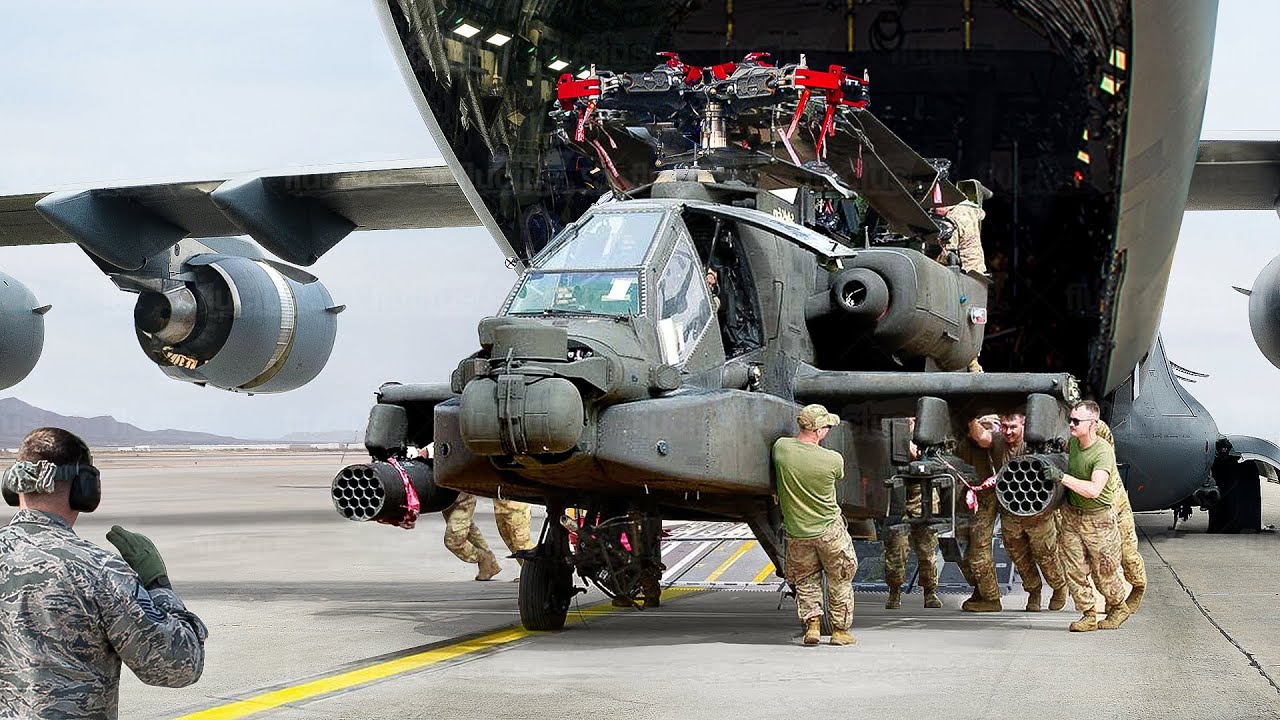Attack helicopters play a crucial role in the Armed Forces, designed specifically to attack ground targets and support troops. These helicopters can also serve as escorts to protect transport helicopters and assist in reconnaissance missions. Their versatility is reflected in their advanced technology, which includes autocannons, machine guns, rockets, and anti-tank missiles like the AGM-114 Hellfire. Consequently, attack helicopters are expensive to produce, with costs running into millions of dollars per unit, accounting for both manufacturing and the research and development behind these units.
Such significant investments have led to the development of remarkable helicopters like the AH-64 Apache. This helicopter has been a vital component of the U.S. and other countries’ military power, deployed in numerous missions. To facilitate the transportation of these aircraft to key points like bases or mission centers, various methods have been developed. One such system is the folding blade system of the Apache, allowing it to enter tight spaces. The rapid deployment blade fold kit of the Apache can restore the blades to their original configuration in just 23 minutes without any extra equipment. This simplifies the helicopter loading process for operators using handling equipment like forklifts, towing vehicles, or specialized helicopter movers.
Highly trained personnel, such as those from the Aviation Sustainment Maintenance Group, carefully follow procedures to load the Apache helicopter into cargo planes like the C-5. This team assesses the weight and dimensions of the helicopters to ensure proper positioning inside the aircraft. The C-5 features both a tail bay door and a nose door, enabling drive-through loading and unloading of cargo. This design makes it easier to stage helicopters inside and secure them with tie-down straps, chains, and other devices.
Once the cargo bay is ready, the plane can take off, showcasing its true capabilities. Powered by four TF39 turbofan engines, the C-5 can carry up to 135,000 pounds of cargo in its 35,000 cubic feet compartment. One of its most critical features is its ability to perform aerial refueling. With 12 internal wing tanks and two wing-mounted refueling receptacles, the C-5 can receive fuel from tanker aircraft like the KC-135 Stratotanker while in flight. This capability significantly extends the plane’s operational range, allowing it to remain airborne for longer periods without needing to land and refuel.
The C-5’s efficient design also facilitates the quick unloading of Apache helicopters, a crucial feature for the intermodal operations of the military. These operations involve the logistics of moving goods or personnel using various transportation modes, such as air, sea, rail, and road. After unloading, maintenance professionals quickly ensure the airplane is ready to fly again, demonstrating absolute professionalism.
Integrating different types of vehicles is essential for intermodal operations to provide the necessary flexibility. An example of this is the transport of Apache helicopters inside a cargo ship. At the port, operators check the helicopters’ conditions and dimensions before moving them using helicopter rigging equipment. Car carriers, also known as RoRo (roll-on/roll-off) ships like the Alliance Fairfax, are commonly used. These ships are designed to carry wheeled cargo, including military helicopters, via towing vehicles. Their wide ramps facilitate easy loading, speeding up the process and reducing the time and labor required.
Once inside the ship, the helicopters are designated to a military cargo area and secured to ship anchors with chains and securing devices. Ground support personnel inspect these to ensure they meet safety standards and can withstand the rigors of transit. Upon arrival at the destination, the ship’s crew and port personnel, including helicopters, handle the unloading process. The helicopters are driven out via lowered ramps, and any damage to the cargo is promptly noted and addressed, ensuring high-quality delivery.
Most of the personnel involved in this process are part of the Theater Aviation Sustainment Maintenance Group. This team and others like it focus on moving the aircraft to maintenance facilities and conducting repairs or necessary maintenance.



